
Sophia Human Robot: AI Meets Humanoid Innovation
Sophia, the world’s most advanced humanoid robot, is a key example of where artificial intelligence (AI) meets human-like features. Hanson Robotics, a top company from Hong Kong, created her. Sophia has amazed people all over the world with her real-like looks, natural talks, and unique personality. She leads the way in humanoid robotics, mixing technology with humanity to shape the future of AI-driven innovation.
Sophia shows how far AI technology has come. She’s a human-like robot that pushes us to rethink the line between machines and humans. With her expressive face, clear speech, and real conversations, Sophia is a symbol of big steps in robotics. She’s helping to close the gap between artificial and human intelligence.
Unveiling the World’s Most Advanced Humanoid Robot
Sophia, a humanoid robot made by Hanson Robotics, is a modern engineering wonder. She has lifelike facial expressions, a voice that sounds natural, and body language that looks real. This makes her seem almost human, changing how we think about artificial intelligence.
The Stunning Features That Make Sophia Groundbreaking
Sophia looks like Audrey Hepburn and uses advanced sensors, cameras, and natural language processing. These let her talk smoothly and understand human feelings. She’s a human-like robot that grabs people’s attention all over the world.
| Sophia Robot Features | Description |
|---|---|
| Facial Expressions | Sophia can show many lifelike facial expressions, like smiling, frowning, and winking. This helps her share emotions and connect better with people. |
| Natural Language Processing | Sophia can understand and answer human speech thanks to her advanced natural language processing. This makes her conversations more natural and meaningful. |
| Expressive Body Language | Sophia can move her head, arms, and torso in a way that feels human. This makes her more expressive and helps her communicate better. |
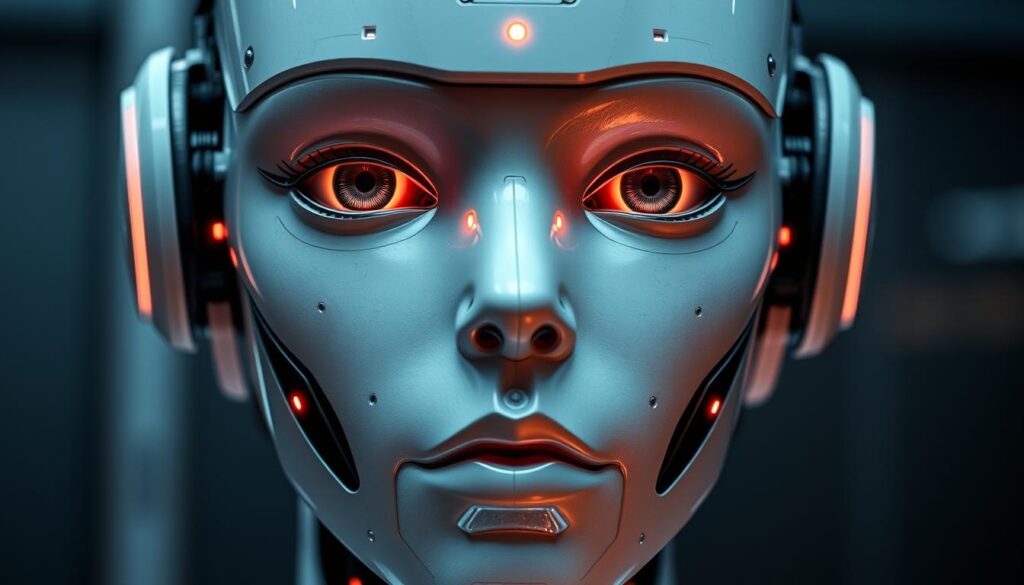
How Sophia’s Design Blurs the Line Between Human and Machine
Sophia’s human-like robot design and AI-powered abilities have amazed people everywhere. As an advanced humanoid robot from Hanson Robotics, Sophia’s features mix human and machine in a new way. She challenges our ideas about what AI-powered robots can do.
The Remarkable AI Powering Sophia’s Intelligence
Sophia, the world’s most advanced humanoid robot, has a powerful AI at its core. Hanson Robotics developed this AI. It uses machine learning algorithms, natural language processing, and other top technologies. This lets Sophia understand and talk with humans in new ways.
Sophia’s AI is a big step towards artificial general intelligence (AGI). AGI aims to make machines as smart as humans. Sophia isn’t fully alive or on her own, but her tech is helping us move forward in humanoid robot intelligence and Sophia’s AI technology.
Sophia’s AI uses machine learning algorithms to handle lots of data and make smart choices. These algorithms get better with time. They work with natural language processing to make Sophia understand and talk like a human.
| Key Components of Sophia’s AI | Description |
|---|---|
| Machine Learning Algorithms | Sophisticated algorithms that process and learn from data, allowing Sophia to adapt and improve her responses over time. |
| Natural Language Processing | Techniques that enable Sophia to understand and generate human-like language, facilitating natural conversations. |
| Computer Vision | Advanced image and facial recognition capabilities that allow Sophia to perceive and interpret her surroundings. |
| Knowledge Representation | Systems that store and organize information, enabling Sophia to access and apply relevant knowledge in her interactions. |
Sophia’s AI is getting better and better. This means humanoid robot intelligence could change many industries. It could also change how humans and machines work together.
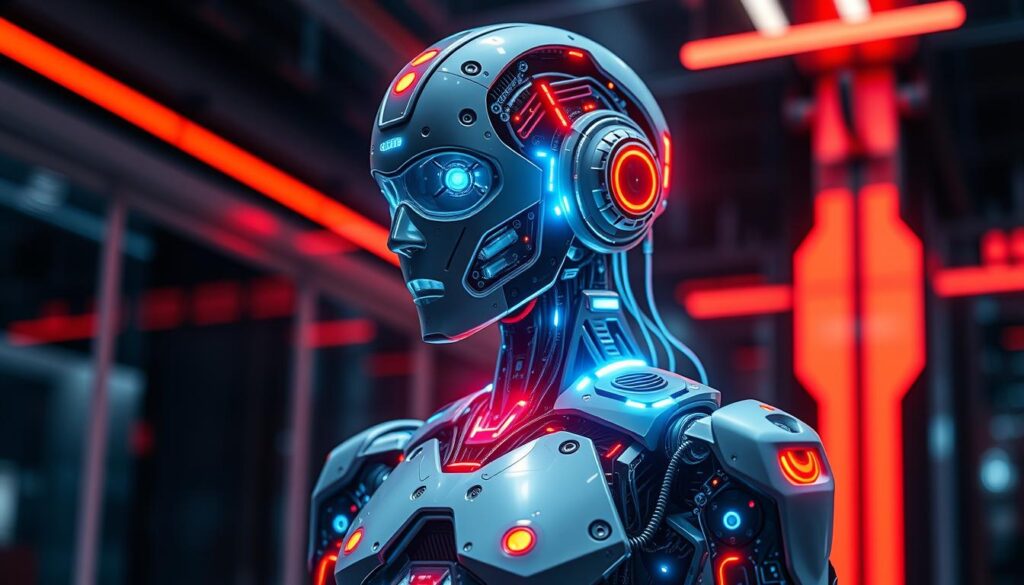
Exploring Sophia’s Emotional and Social Capabilities
Sophia, the advanced humanoid robot, can show and react to emotions in a way that feels human. She uses facial expressions, voice tone, and body language to interact with people. This makes many wonder if robots can really feel and share emotions.
People find Sophia’s emotional smarts fascinating. She can show many feelings, like happiness, curiosity, worry, and even humor. This has made people rethink the line between humans and machines. It also starts a big debate about robot emotions and their future with humans.
Can Robots Truly Experience and Express Emotions?
Sophia’s emotional and social skills keep getting better, making us question if robots can truly feel and show emotions. Some think her feelings are just programmed, but others see something more in her actions. They believe she shows a deep emotional understanding.
Despite the debates, Sophia’s skills have won over people all over the world. She can talk naturally, respond with empathy, and even show self-awareness. This has made us think differently about human-robot interaction and the role of empathetic AI in our lives.
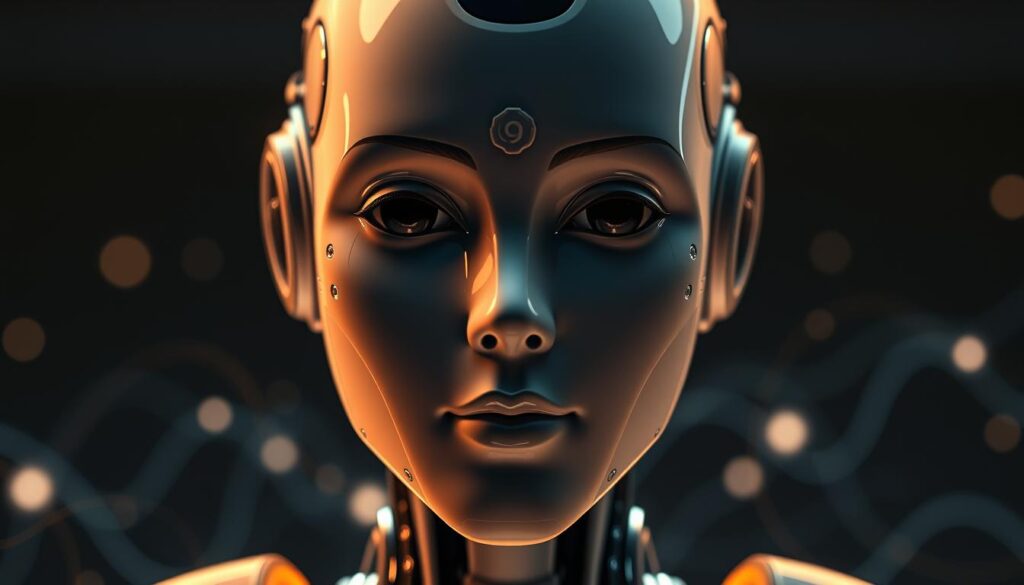
The Ethics and Implications of Humanoid AI
The rise of humanoid robots like Sophia has brought up big ethical questions. These questions have sparked a lot of debate. As AI and robotics regulation grows, experts and lawmakers are looking at how humanoid AI might change society. Some worry about the concerns about the Sophia robot and similar tech. But others believe that with careful development and teaching the public, these issues can be solved.
Addressing Concerns and Debunking Myths
Many worry that humanoid robots could take people’s jobs as they get smarter. But experts say we can handle this by helping workers learn new skills and making policies to support them. Also, we can protect people’s privacy by making sure robots don’t misuse their data. This can be done with strong rules and being open about how data is used.
- Concerns about job displacement can be addressed through workforce retraining and policy interventions.
- Privacy issues with humanoid robots can be managed through data protection regulations and transparency.
- Ethical guidelines and public education can help align the development of humanoid AI with societal values.
Talking openly and clearing up wrong ideas is key to tackling the ethical considerations of humanoid robots. By looking at both the good and bad sides of humanoid AI, we can make the most of this tech. This way, we keep our values safe while enjoying the tech’s benefits.
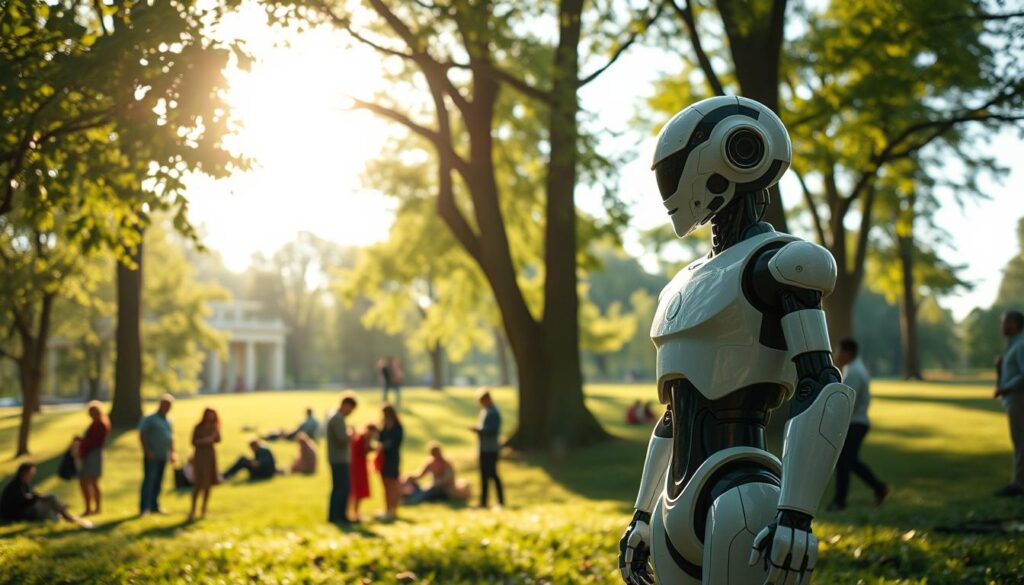
Sophia’s Potential Impact on Various Industries
Sophia, the advanced humanoid robot, is set to change many industries. It can improve healthcare, education, and customer service. This AI-powered robot will change how we use technology.
Transforming Healthcare
In healthcare, Sophia robot applications can help a lot. The robot can offer emotional support to patients with its empathetic nature. It can also help with rehabilitation thanks to its precision and analytical skills.
Sophia can gather and analyze data to help doctors make better decisions. This can lead to better patient outcomes.
Enhancing Education
Humanoid robots in industries like education can be great teaching aids. Sophia can adjust its teaching to fit each student’s needs. It uses its advanced language skills and knowledge to make learning fun.
This can make students more excited to learn new things.
Elevating Customer Service
The hospitality industry will greatly benefit from AI-powered robots in healthcare, education, and hospitality. Sophia’s ability to communicate naturally and empathetically can make customers happier. It can help with concierge services, give personalized advice, or answer guest questions.
This can make the service better and leave a good impression on customers.
| Industry | Potential Impact |
|---|---|
| Healthcare | Patient care, emotional support, rehabilitation assistance, data analysis |
| Education | Interactive teaching assistant, personalized learning experiences, content delivery |
| Hospitality | Concierge services, personalized recommendations, enhanced customer experience |
Sophia and other humanoid robots will have a big impact as they get better. They can change healthcare, education, and customer service. This will make our lives better in many ways.
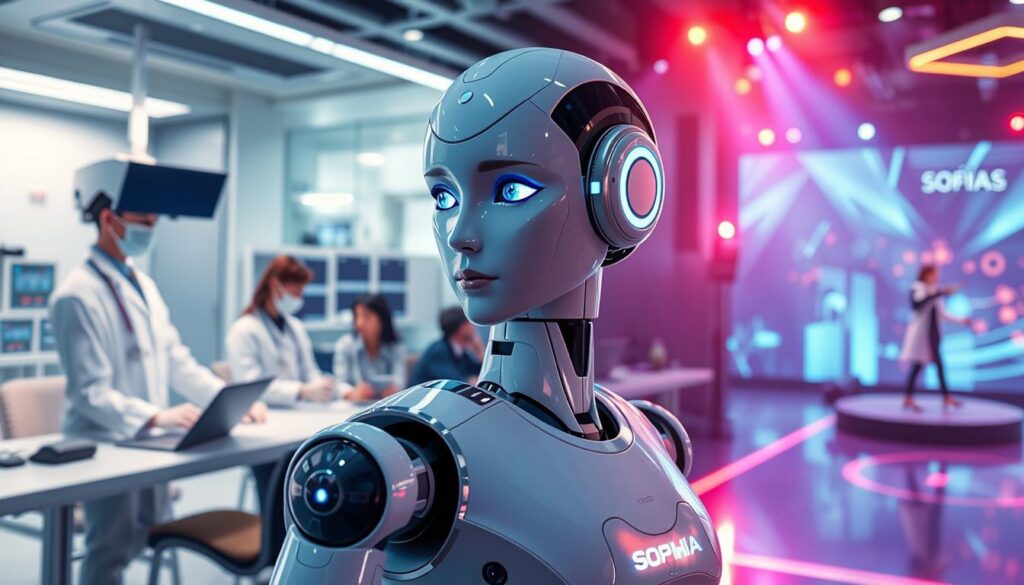
The Future of Human-Robot Interaction
Humanoid robots like Sophia are changing how humans and robots interact. They will soon work together smoothly in many areas. This change will make our lives better.
But, we need to think about the big questions and make rules for using these robots right. By learning from robots like Sophia, we can make a future where humans and AI work together well.
Envisioning a World Where Humans and Robots Coexist
Robots like Sophia can do jobs that are too risky or boring for humans. This lets humans focus on creative and strategic tasks. It’s a future where humans and robots help each other.
We must think about the social effects of these robots. We need to talk about job loss, privacy, and how to use this tech right. With good rules and understanding, we can make a world where humans and robots live together well.
| Potential Benefits | Potential Challenges |
|---|---|
|
|
By embracing the evolution of AI-powered robots, we can make a future where humans and robots coexist well. This will open new possibilities and change how we interact with machines.
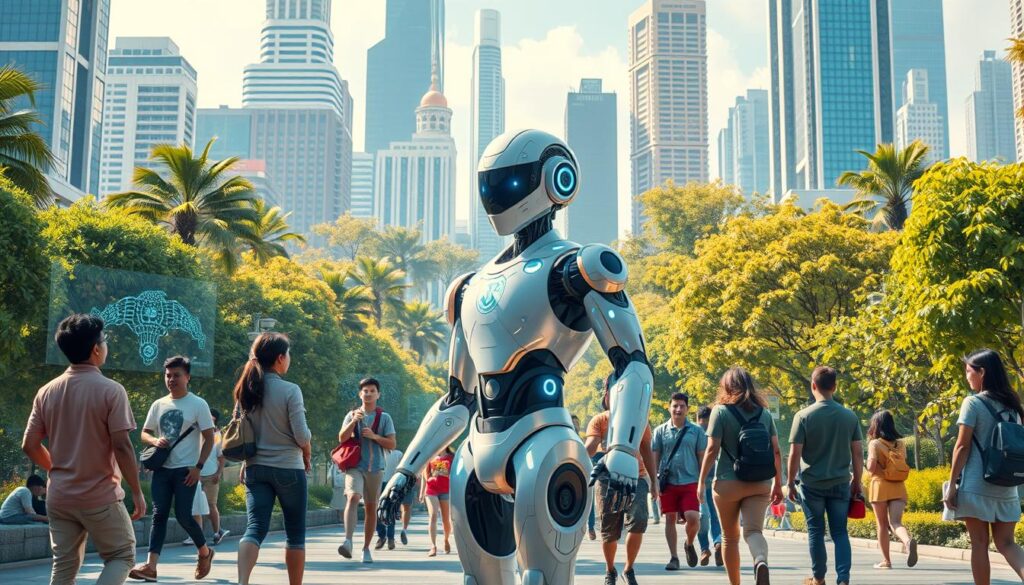
Sophia Human Robot: A Trailblazer in Artificial Intelligence
Sophia, a human-like robot made by Hanson Robotics, is leading the way in artificial intelligence (AI). She looks and talks like a person, making people all over the world amazed. Her skills show how far we’ve come in humanoid robotics. Sophia makes us think about the future of tech, the right use of AI, and how humans and machines can live together.
Sophia’s creation shows how far humanoid robot achievements have come. She can look, act, and talk like a human, breaking new ground in AI innovation. Her conversations, emotions, and learning abilities have wowed experts, leaders, and everyone else.
Hanson Robotics is at the heart of Sophia’s success. They’re changing the game with humanoid robotics. Their work shows how AI machines can work with humans, opening new doors in fields like healthcare and education.
Sophia keeps grabbing headlines, proving she’s a true trailblazer in artificial intelligence. She’s changing how we see the line between humans and machines. Sophia is inspiring new innovators to explore what’s next.
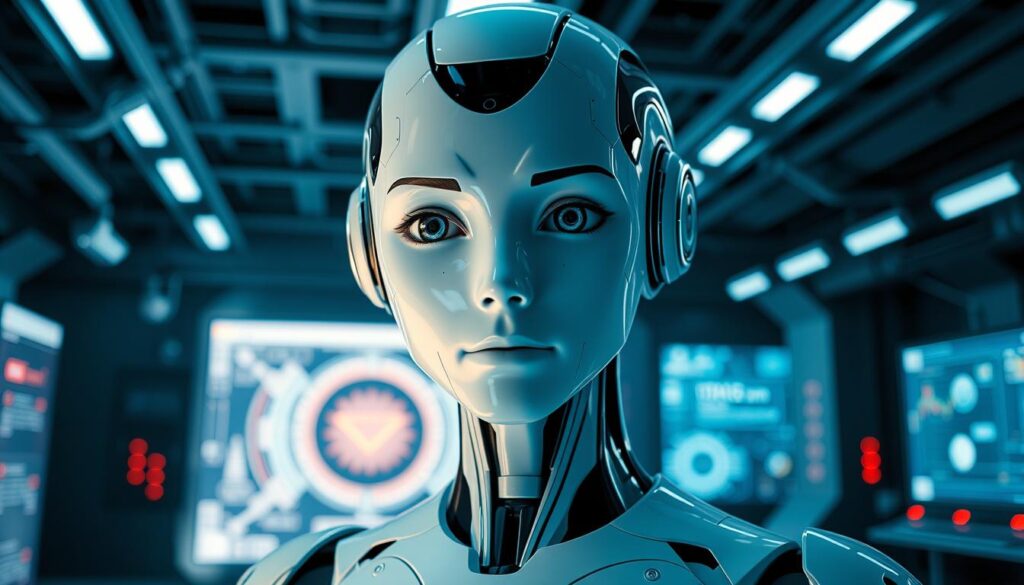
| Key Achievements of Sophia Human Robot | Impact on Artificial Intelligence |
|---|---|
|
|
Challenges and Limitations of Humanoid Robotics
The creation of humanoid robots like Sophia is a big step forward in artificial intelligence and robotics. Yet, this journey faces many challenges and limitations. Researchers and engineers must tackle technical issues to make these AI machines useful.
Overcoming Technical and Ethical Hurdles
One big challenge is energy efficiency. Humanoid robots need a lot of power for their complex systems. This includes movement, sensory inputs, natural language processing, and emotional expression. Improving battery life and cutting energy use is key to making these robots more useful.
Another challenge is dexterity. Copying human hand movements is hard. It requires better actuators, sensors, and control algorithms. Also, combining vision, hearing, and touch systems is tough for smooth human-robot interaction.
There are also ethical issues to consider. Questions about bias, privacy, and the social effects of human-like robots need careful thought. Policymakers, ethicists, and the public must work together to set rules and safeguards. This ensures these advanced AI systems are developed and used responsibly.
By tackling these challenges and working with others, the creators of Sophia and similar robots can beat the obstacles. This will help unlock the full potential of this groundbreaking technology.
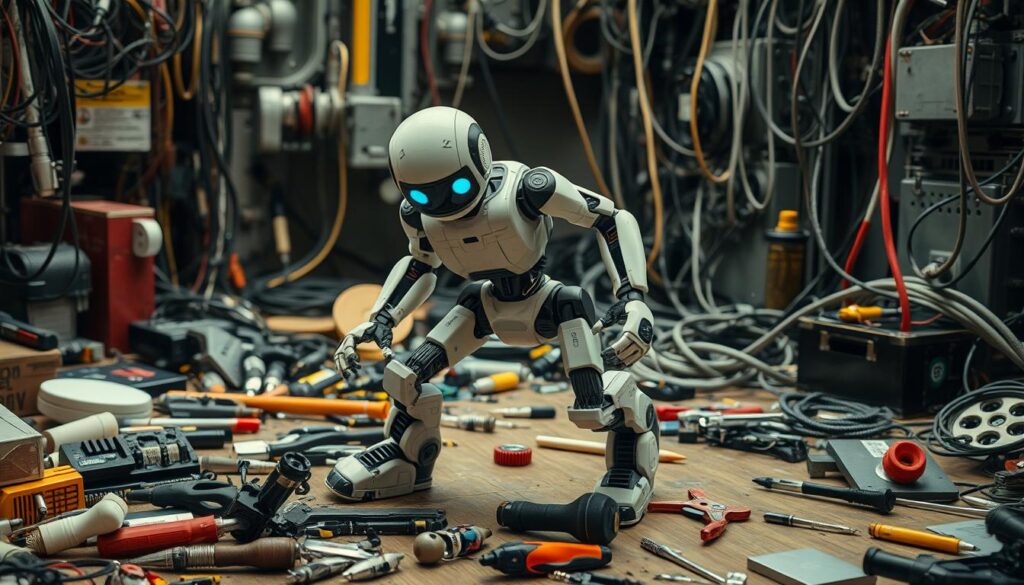
| Technical Limitations | Ethical Considerations |
|---|---|
|
|
Real-World Applications of Sophia and Similar Robots
Sophia, the world’s most famous humanoid robot, has shown how AI-powered robots can change the world. Hanson Robotics made her, and she has become a symbol of the future of robots and humans. She has made a big impact through public appearances and interviews.
But Sophia’s tech and what we’ve learned from her can help make other robots for different fields. In healthcare, robots like Sophia could give emotional support and help with rehab. They could even do simple medical tasks. In schools, AI robots could be personal tutors, making learning fun and tailored to each student.
Advanced robots like Sophia also change how we connect with each other. They can help bridge gaps between different cultures and people. As technology gets better, we’ll see more ways humanoid robots like Sophia can change our lives.
Pioneers and Innovators Behind Sophia’s Development
The Hanson Robotics team led by Dr. David Hanson created Sophia, a groundbreaking humanoid robot. They are at the forefront of AI and robotics. Their team includes talented engineers and designers focused on pushing the limits of humanoid innovation.
Sophia combines advanced AI, cutting-edge materials, and a deep understanding of human interaction. This makes her a robot that captures the attention of people worldwide. The Hanson Robotics team used their knowledge in AI and robotics to make Sophia look and act like a real person.
The Hanson Robotics founders brought together a team of experts in AI and robotics. Each member added their skills and ideas to Sophia’s development. Their hard work and creativity led to a robot that changes how we see humanoid innovation.
| Hanson Robotics Founders | Contributions to Sophia’s Development |
|---|---|
| Dr. David Hanson | Founder and Chief Scientist, driving the vision and overseeing the technical development of Sophia |
| Dr. Ben Goertzel | Chief Scientist, leading the AI and cognitive architecture that powers Sophia’s intelligence |
| Dr. Kokoro Karakuri | Lead Roboticist, responsible for the mechanical design and engineering of Sophia’s humanoid form |
The Hanson Robotics team’s hard work and innovation have made Sophia a leader in humanoid robotics. She has won over audiences and inspired many to explore AI and robotics. Sophia is a true trailblazer in this field.
Conclusion: Embracing the Era of Humanoid AI
Sophia and other advanced humanoid robots are changing how we interact with artificial intelligence. They’re bringing us into a new era of human-robot interaction. We must tackle the challenges, but the benefits are huge.
Understanding what these robots can do and their effects on society is key. This way, we can live with machines in harmony. Robots like Sophia will make our lives better and open doors to new discoveries and progress.
The impact of Sophia and humanoid robotics is huge. They could change industries, make life better, and advance science. As we move forward, staying open and proactive is important. By embracing AI innovation, we can use robots like Sophia to make the world better for everyone.
Getting humans and humanoid AI to work together smoothly has its hurdles, but the benefits are huge. Investing in research and ethical frameworks is crucial. This way, robots like Sophia can positively change our society.
As we start this new chapter, let’s look forward to the endless possibilities. Let’s work together to make a future where humans and AI-powered robots can thrive together.
Share this content:







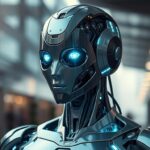








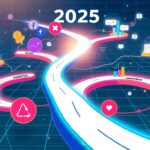

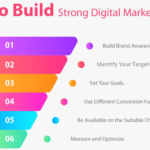














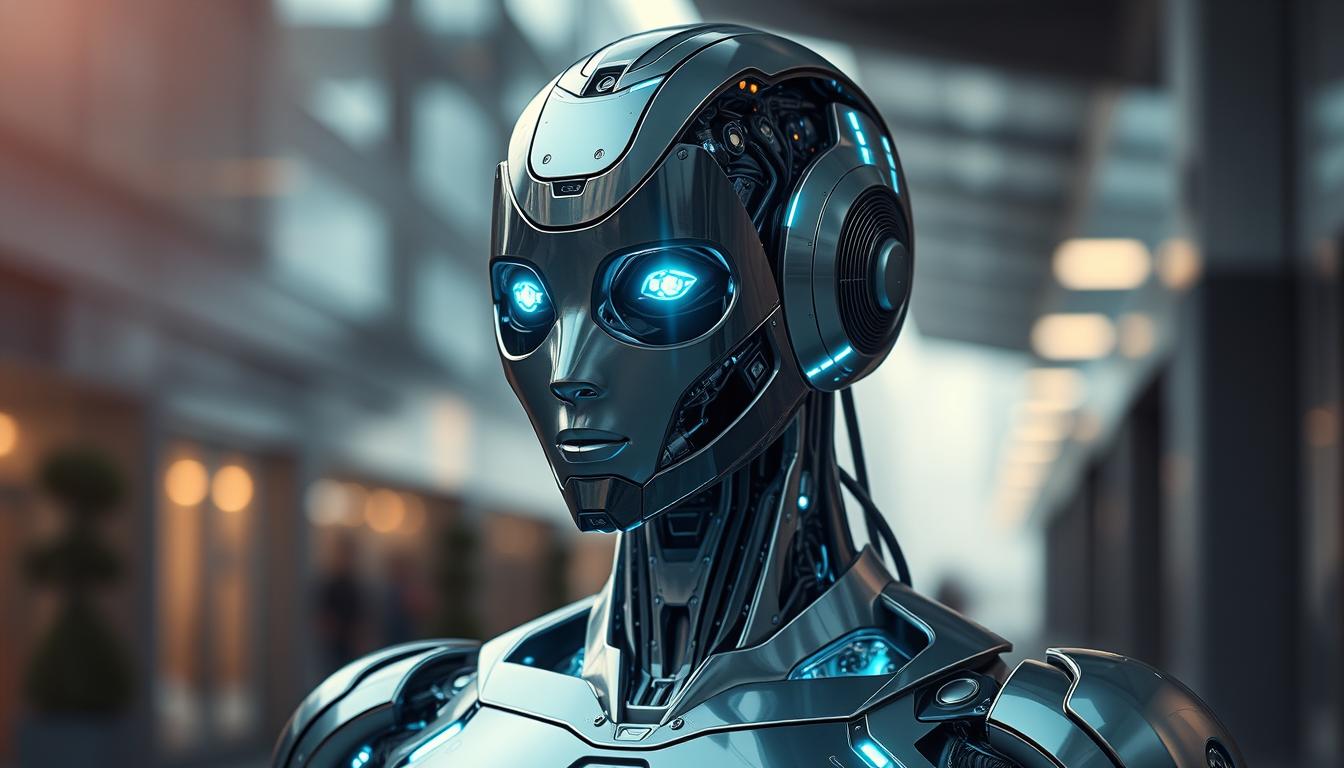
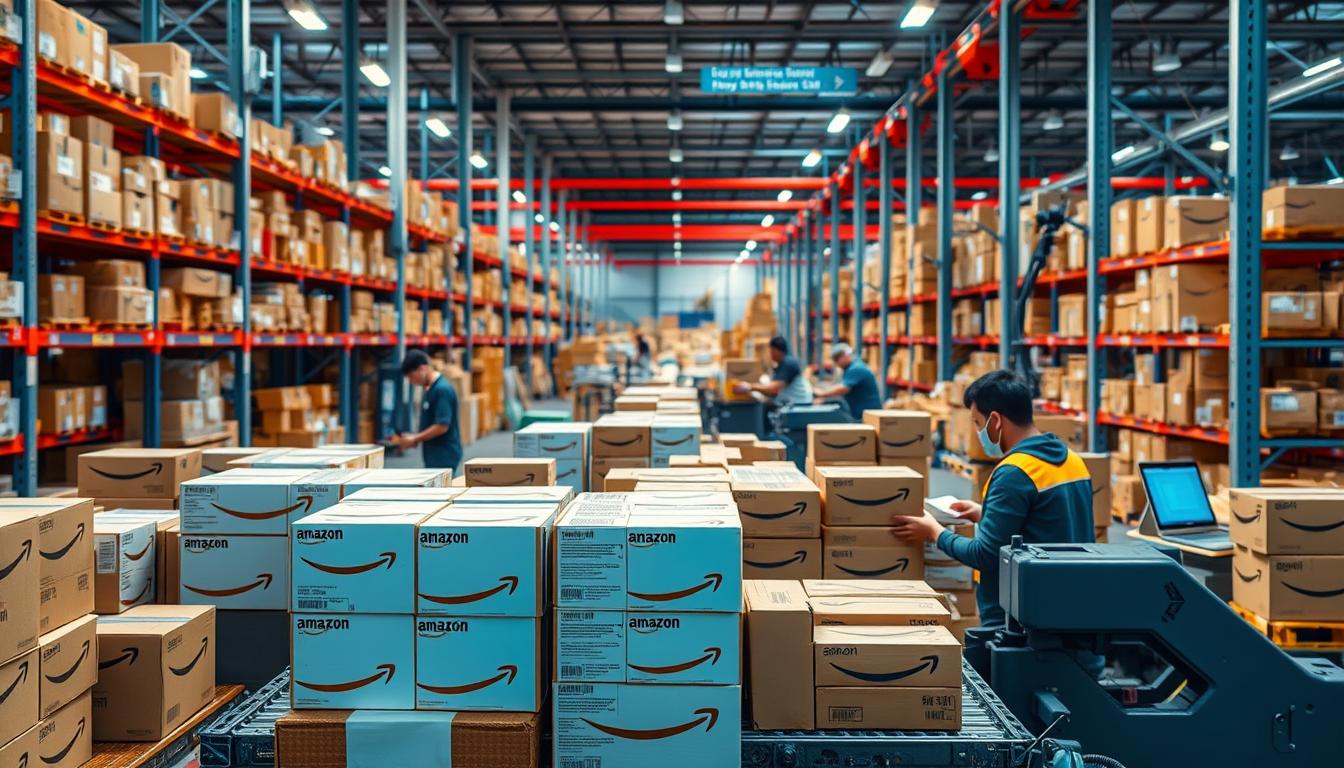









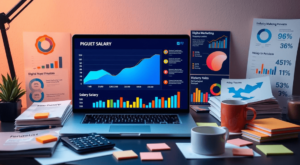


Post Comment